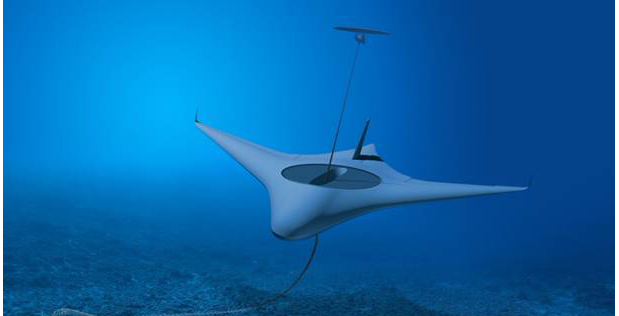Alum Woerner is developing new tech to explore ocean floor
Systems science & engineering alum Kyle Woerner designs innovative technologies that will make unmanned exploration of the ocean floor more feasible

Kyle Woerner was a sophomore at Washington University in St. Louis when he first learned about the Defense Advanced Research Projects Agency (DARPA) and the career opportunities it offered engineers. By that time, Woerner had already signed on to pursue a commission as an officer in the U.S. Navy.
“As I learned more, I decided two things: I wanted to earn my doctorate, and I wanted to eventually end up as a program manager at DARPA,” Woerner said. “It took a career in uniform to make both those things happen.”
Woerner, who earned a bachelor’s degree in systems science & engineering and minors in music and computer science in 2004 from WashU’s engineering school, earned a doctorate in robotics in 2016 from the Massachusetts Institute of Technology after serving in the Navy’s submarine service.
“I started looking at graduate schools and how I could apply my interest in robotics, my background in systems engineering and my hands-on engineering experience,” Woerner said. “I went through graduate school and shifted my focus for the rest of my career into the robotics side of the house.”
During his last tour of active duty before retiring from the Navy, Woerner achieved his second goal. This year, he joined DARPA as a program manager where he develops new technologies deemed vital to national security. Many technologies developed by DARPA, the research and development arm of the U.S. Department of Defense, are now staples of everyday life including the internet, voice recognition software and GPS.
“Everything we do is intended to be groundbreaking or a generation ahead of what anybody else is doing,” Woerner said. “If I'm doing my job correctly, I'm doing things that nobody's done before.”
Currently, Woerner is leading the development of new technologies required for long-term deployment of unmanned underwater vehicles, such as deep-sea energy management systems, efficient propulsion systems and new methods to prevent corrosion or degradation of vehicles during missions. The project, named Manta Ray, also includes finding commercialization opportunities for these innovations.

“The average person might not think of technology meant for use in the ocean as something that would impact their life, but there are a lot of applications, whether it's ensuring we have sustainable fisheries or understanding environmental effects of climate change,” Woerner said.
As program manager, Woerner works with researchers, technical professionals and support staff from departments throughout the federal government, as well as at universities and other institutions around the world.
“We have members of our team in six time zones, and when you incorporate key stakeholders in military and government organizations around the world, we have a 24-hour clock,” he said. “We frequently interact with important stakeholders in Europe, the Pacific and the Middle East.”
While managing a team that complex could be daunting, Woerner credits his naval training and his DARPA team members with helping him succeed.
“One inherent function of being a naval officer is that you are exposed to increasing levels of responsibility, whether that's the number of people you interact with, the size of the project you manage or the dollar value of a portfolio,” he said. “As I’m selecting staff and forming teams, one thing I look for are my personal areas of weakness. It's absolutely crucial to be self-critical and to ensure you can be humble about bringing on the right people to help fill those voids.”



